BEST CYCLING NUTRITION MIXES, GELS, CHEWS AND BARS

Just as we’ve learned how training and gear can improve our performance as cycling enthusiasts, we’re now getting smarter about how the best cycling nutrition can help us ride faster and longer.
In an earlier post, an Enthusiast’s Guide to Cycling Nutrition, I boiled down the latest thinking from researchers, nutritionists, and coaches about several key questions:
- How many calories do we burn during rest, normal activity, and on our rides?
- What amounts of carbs, proteins, and fat should we eat as cycling enthusiasts (not pros)?
- Which are the best foods to get us the calories we need from each source?
- What, when, and how much nutrition and hydration should we take on before, during, and after our rides?
In this review, I’ll take that last question to a more practical level. Specifically, I’ll tell you:
- Which drink mixes, gels, chews, bars, and recovery mixes do my fellow testers and I recommend for the kind of rides cycling enthusiasts typically do: short training or group rides, long rides and events, and hard races or race-like efforts?
LIKE KIDS IN A CYCLING CANDY STORE
For this review, my five fellow testers and I were given carte blanche to test any of the drink mixes, gels, chews, bars, and recovery mixes that BTD (aka BikeTiresDirect) carries from over a dozen leading brands – Clif, First Endurance, GU, Hammer, Honey Stinger, Infinit, Maurten, Momentous, Nuun, PROBAR, Science In Sport, Skratch Labs, and Trail Butter.
We also included our experience with products we’ve used over the years, and the real foods and DIY blends some of us eat on rides.
To make this even more representative and applicable to you, know that my fellow testers and I are quite a varied group.
Miles is a state and regional road race champion and a national road, cyclocross, and MTB age group podium finisher. Adam is a 220lb+, 6’ 4” triathlete who smiles riding uphill and pulls a whole peloton on the flats.
Conor is a serious VT-based gravel rider who competes in events every few weeks throughout the season. Aiyana is a light, fast-as-the-boys road, gravel, and MTB rider.
And I’m a B-group road rider and gravel cyclist willing to test any reasonable training, gear, and nutrition option that might help me stay with the pack of ever-younger riders.
Before we began testing, we each listed our cycling nutrition goals, challenges, and current approach to on-the-bike nutrition. We also rank-ordered the importance of taste, ease of use, performance, cost, and any other factors in choosing specific cycling nutrition products.
With those consciously articulated, individual considerations of what matters most to our cycling nutrition, we independently detailed what we liked and didn’t like about the drink mix, gel, chew, bar, recovery mix, real food, and DIY blends we used on different types of rides.
In The Know Cycling is ad-free, subscription-free, and reader-supported. If you want to help keep it rolling without any added cost to you, buy your gear and kit after clicking the store links on the site. When you do, we may earn an affiliate commission that will help me cover the expenses to create and publish our independent, comprehensive and comparative reviews. Thank you, Steve. Learn more.
SHORT TRAINING OR GROUP RIDES
Until the last few years, many enthusiasts I know didn’t think you needed to have a plan or worry much at all about cycling nutrition on those one-hour interval training rides we do before or after work or on hour-and-a-half group rides on weekday mornings and even during 2 to 2½ hour ones on the weekends.
Adam’s experience followed that thinking. He shared that “for most rides less than 2.5 hours, I can really get away with anything. A bottle of any kind of drink mix is fine, no salt or anything special is needed, and my regular diet is ok on the recovery side.”
Our drink mix favorites
For these kinds of rides, both Adam and Aiyana, who rate taste as the most important factor in choosing between nutrition products, and Miles, Conor, and me, for whom taste is further down the list of what matters most, fill our bottles with Skratch Labs Hydration Sport Drink Mix more than any other.
We like Skratch because it’s not too sweet or tart and has enough flavor options to rotate through so you don’t get tired of the taste. It also dissolves easily in water.
Yet current views on the best approaches to cycling nutrition for enthusiasts suggest that the roughly 30-40 grams of carbs you can get by adding Skratch (1½ to 2 scoops in a 20 to 24oz or 600 to 700ml bottle) or a serving of the First Endurance EFS Hydration Drink Mix (1 scoop) and Maurten Fuel Drink Mix 160 (1 packet) we also tried won’t maintain or replenish the glycogen levels we started our rides with.
Consider that even a Zone 2 workout at 60-75% of a typical enthusiast’s FTP will burn about 500 kilojoules or approximately 500 calories in an hour. You could easily burn more if you’re doing intervals or a hard 90-minute group ride.
With carbs delivering 4 calories/gram, drinking 30-40 grams of carbs/hour will get 120-160 calories back into your system. That’s just 1/4 to 1/3 of what you’ll burn over the same time period.
That’s assuming you down a 20-oz or 600-ml bottle of your drink mix per hour. While that’s a good goal for your nutrition and hydration needs, I have a hard time drinking that much when I’m riding in temperatures cooler than 75F/24C.
So you could see your performance deteriorate on your last intervals or last pulls of a group ride because you’re under-fueled.
Add gels to get the carbs you need
The current advice for enthusiasts is to consume at least 60-90 grams of carbs/hour or roughly 2-3x what you can get from a bottle/hour filled with a typical drink mix. (I’ll get into high-carb drink mixes later.)
This is where gels come in. In addition to drinking carbs, eating 2-3 gels an hour during one of these short training or group rides can help you replenish about half of the calories you’ll burn and as many carbs as research shows your body can absorb.
Unlike the drip-feed effect of sipping on your water bottle a half dozen times, the 21-26 grams of carbs in most gels take about 15 minutes to “kick in” or leave your stomach to go to your small intestine and then be absorbed into your bloodstream to reach your muscles. With that in mind, you’ll want to have a gel before you start your ride and then two to three every hour, or one every 20-30 minutes, during the workout.
Eating two gels an hour will get you roughly 45 grams of carbs. Along with the 30-40 grams of carbs from a bottle of drink mix, that will bring you into the 60-90 grams/hour target range and offset roughly 50% to 70% of the calories you burn.
If you haven’t been consuming this amount of carbs, it will likely take you a month or so to train your gut to get used to it. So build up to this level if you don’t want your stomach to take control of your rides.
We each had favorites among the five brands of gels we tested or have used (GU, Honey Stinger, Maurten, SIS, and UnTapped).
Aiyana and I like the GU Energy Gels for their variety of flavors, gel viscosity, small package, and ease of use – they take up the least amount of room in your pocket, and your teeth can open them just enough to squeeze the gel through without detaching and losing the top. Those who didn’t like them found them too sweet and sticky.
Miles and Conor like the milder taste of the SiS (Science In Sport) GO Isotonic Energy gel. They also appreciate that it’s diluted enough that they don’t need to wash it down with water. Others of us didn’t like them for much the same reason – it seems like drinking flavored water – and their tops are hard to open with our teeth.
Conor also likes UnTapped Energy Gel for its taste, the quick hit of sugar during a ride, and, well, because he lives in Vermont where they’re made.
Each delivers roughly the same range of carbs per gel – GU-22g, SiS-21g, and UnTapped-26g.
Miles, Conor, and I also became fans of the Maurten Fuel Gel 160, though not for these short workouts or group rides. More on Maurten later.
All carbs are not created equal
As I detailed in my earlier post, an Enthusiast’s Guide to Cycling Nutrition, carbohydrates come in multiple forms that exit your gut and are absorbed into your bloodstream through different pathways and at different rates.
Getting that 60-90 grams/hour of carbs needs to come from a combination of glucose (or maltodextrin, its more commonly used form in cycling nutrition products) and fructose. That’s because, even after gut training to get used to more carbs, research shows that we can only absorb about 60 grams/hour of glucose and 30-60 grams/hour of fructose.
Most of the drink mixes and gels we like have both glucose or maltodextrin and fructose though few tell you the specific ratio between the two. For those that do and despite the marketing, research is inconclusive as to whether there’s a significant performance benefit between 2 to 1 or a 2 to 1.6 (or 1 to 0.8) ratio of glucose/maltodextrin and fructose.
All the drink mixes we tested contain glucose/maltodextrin and fructose. Of the gels, GU, Honey Stinger, and Maurten also have both nutritional components.
However, UnTapped is maple syrup or sucrose, which needs to break down into glucose and fructose in the small intestine and, therefore, takes a bit longer than the other gels to get into the bloodstream.
The SiS GO Isotonic gel contains only maltodextrin. It will only add carbs to the glucose absorption pathway that maxes out at 60 grams of carbs/hour. Their higher-carb Beta Fuel gel, which we didn’t test, has both maltodextrin and fructose.
There’s also a fair amount of marketing debate about how well or fast each gets to your muscles. For example, SiS claims you don’t need to drink water to get one of its GO Isotonic Energy gels working. Indeed, the leading ingredient of these SiS gels is water followed by maltodextrin, the opposite of GU’s ingredients listing.
SiS’s Beta Fuel Gel and Maurten’s Fuel Gel 160 each have 40 grams of carbs per serving and contain novel formulations of these carbs – cluster dextrins and hydrogels, respectively. While there’s a lot of technology and marketing behind these ingredients, independent research surveys show these formulations don’t change performance. (Fueling Endurance, Episode 78).
Beyond the flavor differences, the package size and consistency will be quite notable and might affect your consumption rate.
The SiS and Maurten gels’ package volume is about twice that of GU. That’s because water is their first ingredient. Yet the SiS GO Isotonic gel has the viscosity of water while the Maurten gels feel like you’re eating Jello.
To complete the consistency profile, GUs have a crème pudding-like viscosity, though it gets notably thicker or thinner as the temperature changes, and UnTapped is like swallowing pure maple syrup, which, of course, it is.
Most drink mixes come in single or multi-serving packages. Yet, the serving size doesn’t easily match most cycling water bottles.
Skratch suggests one serving per 12-18oz or 350-530ml, while Maurten’s serving is recommended for a 17oz or 500ml bottle. I don’t know anyone using bottles that size or that small.
First Endurance recommends one scoop per 21-22oz or 620-650ml bottle and 1¼ for 24-26oz or 710-770ml ones, the sizes of the small and large bottles in my cupboard.
How much of each drink mix you put in different-sized bottles can change the strength or mildness of the taste, though not the consistency.
The key to making all of this work is getting your carbohydrate consumption up as close to 60 grams of glucose or maltodextrin and 30-60 grams of fructose an hour as you can in whatever combination of drink mix and gels you prefer. That will have the most notable performance benefit compared to the far smaller amounts many of us enthusiasts normally consume.
You may need more electrolytes
While the grams of carbs in these drink mixes (30-40 per bottle) and gels (21-26 per gel) are similar for each nutrition type, their electrolyte concentration varies quite a bit.
Of the drink mixes we tested, Skratch has 2x the sodium per bottle (600mg at 1½ scoops ) than First Endurance (300mg, 1 scoop) and roughly 3x that in the Maurten 160 (160mg, 1 package).
Among the gels, GU has the most (125mg), Honey Stinger (50mg), and Maurten (20-30mg) have far less, and there’s essentially none in UnTapped (5mg) and SiS (4mg).
How much water and sodium you need varies greatly based on how heavily you sweat and the temperature and humidity on the day you ride. Needs for each vary widely by season and even more so from one cyclist to the next.
If you drink a bottle per hour to remain sufficiently hydrated, research has found most people will need between 500 to 750mg per bottle of sodium though it ranges from half to twice that amount (250 to 1500mg).
And you need to work on getting your water and sodium in the right combination. Too much of one or not enough of the other will create an unsustainable balance. Practically, this means adding the right amount of sodium to each water bottle.
While our test team has only ever tried Nuun SPORT Hydration, we like the range of flavors, the gel-size container that a package of 10 coin-sized tablets comes in, and the ease with which they dissolve. They do add fizzy gas bubbles that turn some of us off, but others like the taste in our mouths and the way it works in our stomachs.

At 300mg of sodium per tab or 150mg by snapping one in half, you can add as much as you need to make up for what your drink mix and gel combination may lack versus what you need.
What about other nutrients and preferences?
None of the drink mixes or gels contain protein, fat, or fiber. You don’t need or want any of that on a short ride – they absorb more slowly than carbs and aren’t fuel you’ll use during a ride.
However, most are vegan, and many are gluten-free. Several gel flavors also come with caffeine if you want to give your system a little added stimulus during key parts of your ride.
The chart below shows the ingredient and price breakdown of all the products we reviewed. I know; it’s harder to read than an ingredients label. Sorry. You can click the image to expand it in a new tab.
Package prices vary greatly, but carb prices don’t
While the price per package and serving varies quite a bit, the price per gram of carb is remarkably similar within the drink mix and gel categories.
For example, a 30-serving package of drink mix from First Endurance costs $35, an 18-package box of Maurten 160 is $42, and a bag of Skratch with 40 scoop-and-a-half servings is $55. The price per serving converts to $1.17 for First Endurance, $2.33 for Maurten 160, and $1.38 for Skratch.
But per carb, First Endurance and Skratch are the same at $0.04 while Maurten 160 is half-again more expensive at $0.06. The higher concentration Maurten 320 is $0.04 per carb while the Skratch Super Hi-Carb Sport Drink Mix is $0.05.
Gels are about twice as expensive per carb as drink mixes, ranging from $0.07 to $0.08 for all but the Maurten options, which are twice that. The GU, Honey Stinger, SiS, and UnTapped gels cost from $1.60 to $1.85 per gel.
While some of these products go on sale, my comparison shopping spree showed little variation from one online store to the next.
LONG RIDES AND EVENTS
Getting your cycling nutrition right on longer rides is even more important. When you get it wrong, your power will slowly fade from hour to hour as your glycogen stores deplete and you don’t put enough new carbs into your system to keep you going. If the ride is long enough and you’ve underhydrated or underfueled throughout, you might get cramps, diarrhea, or bonk.
As if that wasn’t bad enough, and it’s pretty bad, recognize that your brain doesn’t function well when you’re body is hungry. You risk making slow or bad cycling decisions about the things most important to your safety, let alone your performance – stopping for lights, cornering at the right speeds, navigating amongst other cyclists and cars, shifting and braking at the right times, etc.
The good news? If you’ve trained well and get your daily and on-the-bike nutrition right, you’ll likely maintain your power, gut balance, and tactical decision-making or at least see them decline less over the course of a 3 to 5-hour or even longer ride. And, if others don’t get it right when you do, that can give you an advantage in a competitive event.
Consuming even 90 grams of carbs an hour or the equivalent of 360 calories on the bike, you’ll be refueling at less than the demands of 500 cals/hour of Zone 2 riding or 600 cals/hour while doing a tempo or sweet spot pace.
Even if you’ve topped off your glycogen stores from eating well in the days before a long ride or event, the longer your ride, the more your absolute carb deficit will grow. As an enthusiast, part of your training plan should include working on getting your carb intake as close to the high end of the 60-90 grams/range as possible during your ride and, if you can, stomach it (pun intended), even more than that.
More fueling options
The other good news about fueling longer rides is there are more options to choose from if variety in your fuel sources psychologically helps you to ride better for longer.
Adding carbs and calories from chews and bars can fuel your ride in similar amounts to gels but also add variety to your palate if you aren’t psyched to eat gel after gel for hours on end.
Bars can also add fat and protein to your diet in a more concentrated, digestible, and accessible way than eating real food at a café stop or what passes for food from a gas station store during a long day.
Chews or candy?
More of us like the Skratch Labs Energy Chews than any of the other chews we’ve tried. We like, or for some of us love what seems like having a candy treat out on a ride when eating these chews. The range of flavors they come in is also a big plus.
We also like the Honey Stinger Organic Energy Chews and Clif Shot Bloks Energy Chews. No one didn’t like them.
The Skratch and Honey Stinger chews are coated with what seems like sugar granules. I found the texture a little like eating sand-covered candy until I realized it was sugar, and then my brain was happy. But the sugar sticks to your fingers and can make your shifters a little tacky after eating just a few.
If your teeth are sensitive to eating straight sugar, you’ll want to stick to the Clif Shot Blocks, which are just as sweet but have dissolved the sugar in their chews rather than layered on top of them.
Beyond the taste, there are clear plusses and minuses of eating chews even during these longer rides.
From a performance standpoint, each serving is between 19 and 24 grams of carbs depending on the brand and flavor. Yet the serving size is just half the 6 to 10 gumdrop-size pieces you get in each package. If you eat all of them, and it’s very tempting to do so, you’ll get 40 to 50 grams of carbs at once, twice the amount you get from standard gels.
You don’t get enough sodium from any of these chews to make a difference in getting the necessary electrolytes. But there’s also no fat, protein, or fiber to worry about your system using energy to metabolize during a long ride.
There are several downsides of chews that make them more of a treat than a regular nutrition source during a ride. They take longer to eat than gels, even if you stuff two or three into your mouth at a time. And fishing around in your pocket for them also takes more dexterity than some of us have the patience or skills to pull off while riding.
Except for the most practiced chew eaters, opening a bag or sleeve of them takes two hands. If I’m on a long ride or doing a half-day when I know I will want or crave chews, I’ll open a bag or two before starting to get to them more easily. Otherwise, they’re best to enjoy during a short stop, something you might do a few times along the way.
Miles, who seems to be racing every chance he gets, dismisses their use when he’s out on the course. “For me,” he wrote, “these are only pre-event, 15-30 minutes before things get started.”
Like drink mixes and gels, the price to buy chews in quantity varies widely, but the price per serving is closer from brand to brand. The price per carb is $0.05 to $0.06, a penny or three less than gels.
Bars for when you’re hungry
Bars are fillers as much as fuelers. In addition to carbs that come in amounts similar to gels and chews, each has a meal’s worth of fat (6-8 grams per serving for most, a couple with 10-13 grams) and some have a fair amount of protein (5-11 grams) and fiber (3-5 grams). That fat and protein tends to satiate hunger feelings in ways that carbs alone don’t.
Several bars aren’t shy about the role they’re trying to play in your cycling nutrition. The PROBAR Meal Bar puts it right in its name. The Skratch Labs Energy Bars say it right on their wrappers – “Eat it when you’re hungry. Don’t if you’re not.”
Our team of eaters sees more differences between these bars than any other category of cycling nutrition.
Clif Bars and PROBAR Meal Bars are dense and very filling. I can only eat half a Clif Bar at a time, and big boy Adam can’t stomach a PROBAR unless he’s doing a ride longer than four hours.
The Skratch Labs Energy Bars we tried have 32-34 grams of carbs in each, or about ¾ of what you get in the Clif and PROBAR ones. They also have more fat than both, though they are smaller, far more moist, and don’t feel like they are filling you up as much. While they taste more like real food, neither Aiyana nor I loved the peanut butter + strawberry or raspberries + lemon flavors.
Picky Bars are small and moist and have some winning flavors. But they and the least-tasty of all Hammer Bar have fewer carbs and sodium yet similar amounts of fat, protein, and fiber as the Clif Bar and PROBAR Meal Bar.
For us, the winners in this category of bars are the waffles. We loved eating the Honey Stinger Organic Waffle and GU Energy Stroopwafel. With 21-22 grams of carbs per serving, 6 grams of fat, and next to no protein or fiber, they fuel and fill a bit without you feeling like you’re eating a meal.
Eating one of these waffles is more like having a somewhat chewy, somewhat crunchy, always yummy cookie after a meal or sneaking one in between meals. The texture of each never gets too crumbly and the flavors we tried – honey and vanilla Honey Stingers and caramel and gingerade Stroopwafels – were all tasty and hard to choose between.
Waffles take up more space in your pockets than gels for a similar amount of carbs, don’t open easily on the ride, and are best eaten on a quick stop or rest break. Unless you have hunger pangs, want a more dense or available meal than real food, or are craving the closest thing to a cookie, it’s hard to recommend waffles or bars as “cycling nutrition.” They’re certainly better than most gas station food, but that’s clearing a pretty low bar.
HARD RACES AND RACE-LIKE EFFORTS
For an enthusiast’s hardest efforts, whether it’s a drop-ride Hammerfest, an intense 2-3 hour interval workout, or an on-it-from-the-start road race, you’ve got less time to fuel yet need more of it than in any other scenario.
Drink mix is still a good foundation, but finding time to eat more than a couple of gels or two an hour is tough, and chews or bars are impractical when you’re going hard.
No night-before, morning-of, or on-the-bike nutrition will be enough to make up for not eating well and keeping your glycogen stores filled up throughout the week, especially at the 5-6 major meals before these efforts.
More carbs to the rescue
If you have eaten well coming in, higher-carb drink mixes and gels are the best on-the-bike fuel for your hard efforts and races. They essentially double the grams of carbs you get per serving compared to the more common versions.
Miles, Conor, and I all liked the Maurten Fuel Drink Mix 320 (79 grams of carbs per serving) and Maurten Fuel Gel 160 (40 grams of carbs per serving). With a 1 to 0.8 glucose to fructose ratio, they are designed to max out the 60 grams/hour rate that independent research shows our bodies can absorb along different pathways of each of these types of carbohydrates.
Drinking a bottle/hour of the Maurten Drink Mix 320 and eating a regular gel (21-26 grams of carbs) or Maurten Fuel Gel 160 will get you 100 to 120 grams of carbs with the least amount of time spent fueling.
This high-carb combo is also a good solution for long rides and events when you don’t want to pack that many gels, chews, or bars in your pockets or on your bike and don’t want to grab a gel three times an hour for hours on end.
While you might think that more carbs would make them sweeter, their taste is still quite mild. They’re actually far less sweet than the Skratch drink mix or GU gels which have about half the carbs.
Do they cost more?
Maurten’s high price for the drink mix ($48 per box of 14 single-serve packages, $3.43 per serving) and gel ($50 per box of 10 gels, $5.00 per gel) had us all thinking about how often we could afford to use them.
On a $ per gram of carb basis, the Maurten Fuel Drink Mix 320 is actually the same $0.04 as the standard concentration Skratch and First Endurance drink mixes.
The Maurten Fuel Gel 160 is $0.13 per gram of carb, or about twice the price of the regular gels on a carbohydrate nutrient level.
When you consider the carbs you need, the carbs you get, the price per gram of carb, and the time or distraction accessing those carbs for these hard efforts, the price of the Maurten drink mix and gels is a bit easier to swallow. (There I go again.)
Skratch makes a Super High-Carb Sport Drink with 100 grams of carbs per serving. SiS Sport Beta Fuel Gel also comes with 40 grams of carbs per serving. The Skratch mix is priced even higher than Maurten’s at $5.25 per serving but is only $0.01 more per gram of carb. SiS’s gel is less expensive than Maurten’s, both per gel ($3.00) and per gram of carb ($0.08).
We haven’t taste-tested either the Skratch drink mix or SiS gels. If you have, please share your experience in the comments section at the end of this review. I’d love to read them.
Homebrews can save money if not time
One other option is to make your own drink mix in whatever concentration you prefer for different types of rides. For the last couple of years, I’ve been mixing 50 grams of maltodextrin and 25 grams of fructose from bulk packages with 25 grams of Skratch Labs Hydration Sports Drink Mix to get a 100-gram carb, 380 mg sodium bottle.
It takes about 20 minutes to measure out and blend 15 baggies worth of this mix each week. I dump a bag of mix into a bottle or two before each ride, add water, and shake them like crazy for a few minutes each, hoping they dissolve thoroughly. It can be a bit messy and isn’t very time-efficient, but it costs about $2.00 per bag of this homebrew or $0.02 per gram of carbs.
Since trying the Maurten Fuel Drink Mix 320 and weighing the cost of my time, the cost per carb, and the fact that the Maurten isn’t nearly as sweet as my mix and dissolves with a lot few watts from my spindly arms and shoulders, I’m leaning into the Maurten far more.
POST RIDE RECOVERY
In my Enthusiast’s Guide to Cycling Nutrition, I wrote that researchers, sports nutritionists, and coaches suggest enthusiasts should eat carbs and protein in a 3:1 or 4:1 ratio and in amounts of 1-1.2g/kg/hr of carbs and 0.3-0.4g/kg/hr in the hours from the end of a ride and our next regular meal.
For a 150lb/68kg rider, this equates to about 70 grams of carbs/hr (simple or complex, both glucose and fructose) and 20 grams of protein/hr.
A post-ride recovery shake within an hour of your ride, followed by a meal within an hour or two after your ride is the right combination to begin replenishing your glycogen stores and getting your protein in.
In this section on recovery mix products, I start from this perspective since nutrition is the biggest difference between the mixes we tried or have used.
GU Roctane Protein Recovery has a 3:2 ratio (30 grams of carbs, 20 grams of protein per serving), Hammer Nutrition Recoverite 2.0 comes in closer to 3:1 (33g carbs, 10g protein, and Skratch Labs Recovery Sport Drink Mix finish just above 4:1 (35g carbs, 8 g protein).
If all you’ll eat within the first hour after your ride is a recovery shake, only the GU Roctane hits the targeted 20 grams of protein/hour for a 150lb/68kg rider. If you know you’ll eat a meal with protein soon after, you can go for slightly more carbs with the Hammer and Skratch recovery mixes.
They all come in chocolate flavors, which all of us liked from all three brands except for one who didn’t like Hammer’s version. Add milk instead of water and it gets even more yummy. Skratch also makes a chocolate vegan version.
GU makes its Roctane in just Chocolate Smoothie and Vanilla Bean flavors but sells them in single-serving packages if you are traveling to an event and don’t want to bring the 15-serving bag.
In addition to chocolate, Skratch’s recovery mix is available in 12 or 24-serving bags in strawberries and cream and Conor’s favorite, Horchata.
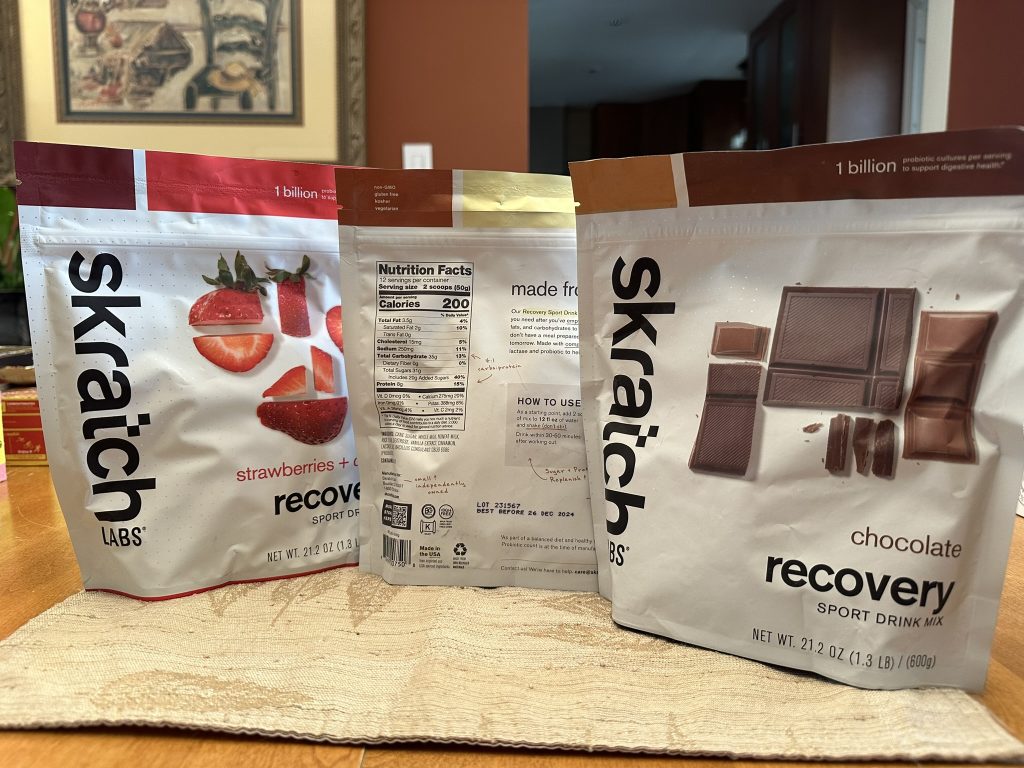 Hammer has the widest range of flavors – chocolate, vanilla, strawberry, orange, and caffe latte with caffeine – each available in single-serve packages if your palate wants to be spontaneous after your ride or in a 32-serving container if you know what you like and like what you know.
Hammer has the widest range of flavors – chocolate, vanilla, strawberry, orange, and caffe latte with caffeine – each available in single-serve packages if your palate wants to be spontaneous after your ride or in a 32-serving container if you know what you like and like what you know.
They cost pretty much the same – $3.00 per serving and $0.08-$0.10 per gram of carbs – regardless of whether you get them in single- or multi-serving packages.
As with ride drink mixes, you can DIY your way to recovery and save some money by combining maltodextrin and protein powder in a blender bottle in whatever amounts, ratios, and protein flavors you want.
GRANDMA KNEW CYCLING NUTRITION
Whenever I went to my grandmother’s house for a family dinner, she used to tell me: “Look how thin you are! You don’t eat enough!! EAT!!!” She’d then bring out enough spaghetti and meatballs for three families and wouldn’t be happy until I filled and cleared my plate at least twice.
Unknowingly, she fed me the best cycling nutrition advice (along with ample carbs and protein) that I follow today as an enthusiast. Allow me to pass Grandma’s advice to EAT!!! as much as you can when you’re out on a ride.
There are many good drink and recovery mixes, gels, chews, and bars to choose from. I hope this review helps you make the choices that fill up your cycling plate for whatever length and intensity ride you’re on next.
* * * * *
Please let me know what you think of anything I’ve written, or ask any questions you might have in the comment section below.
If you’ve benefited from this review and want to keep new ones coming, buy your gear, kit, and nutrition after clicking the store links in this review and others across the site. When you do, we may earn an affiliate commission that will help me cover the expenses to create and publish more ad-free, subscription-free, and reader-supported reviews that are independent, comprehensive, and comparative.
If you prefer to buy at other stores, you can still support the site by contributing here or buying anything through these links to eBay and Amazon.
Thanks, and enjoy your rides safely! Cheers, Steve

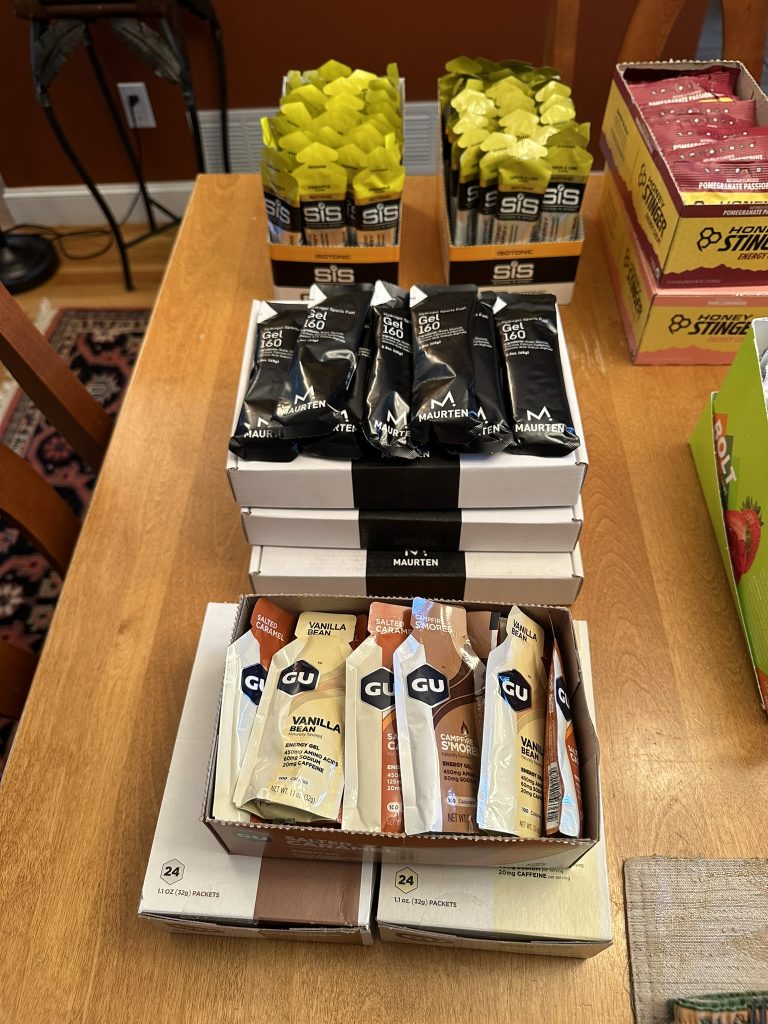
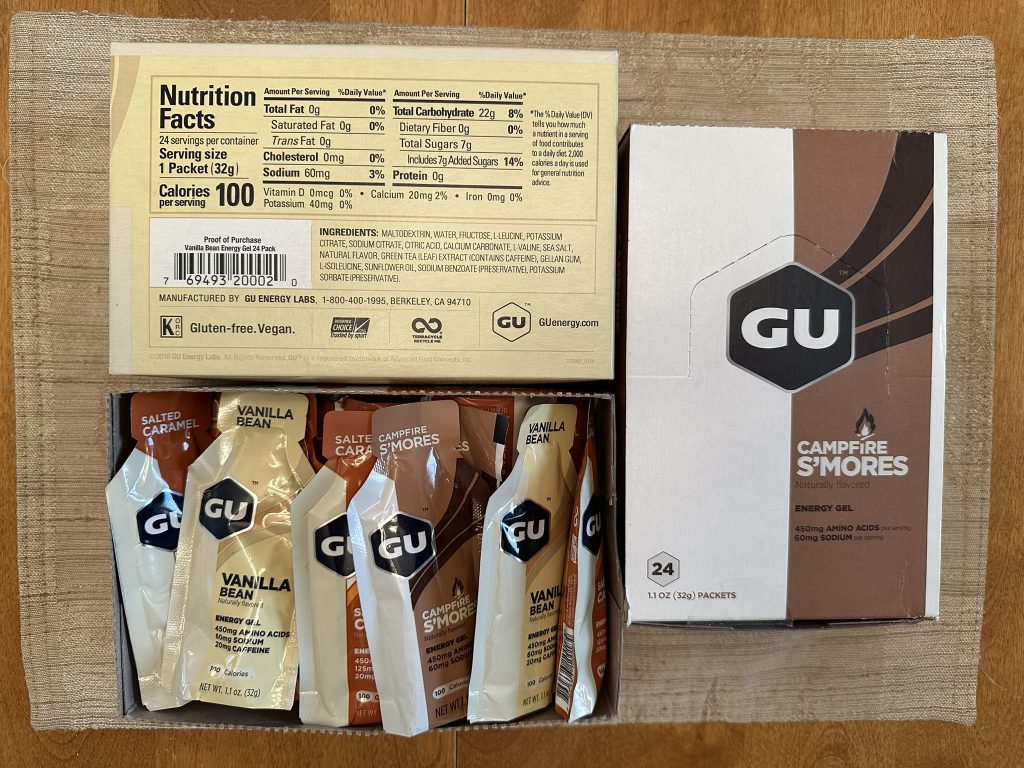
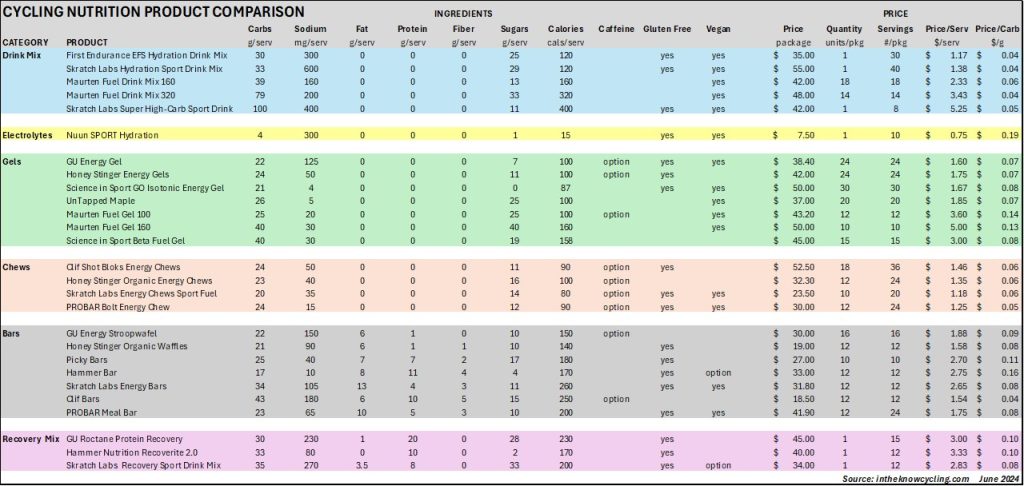
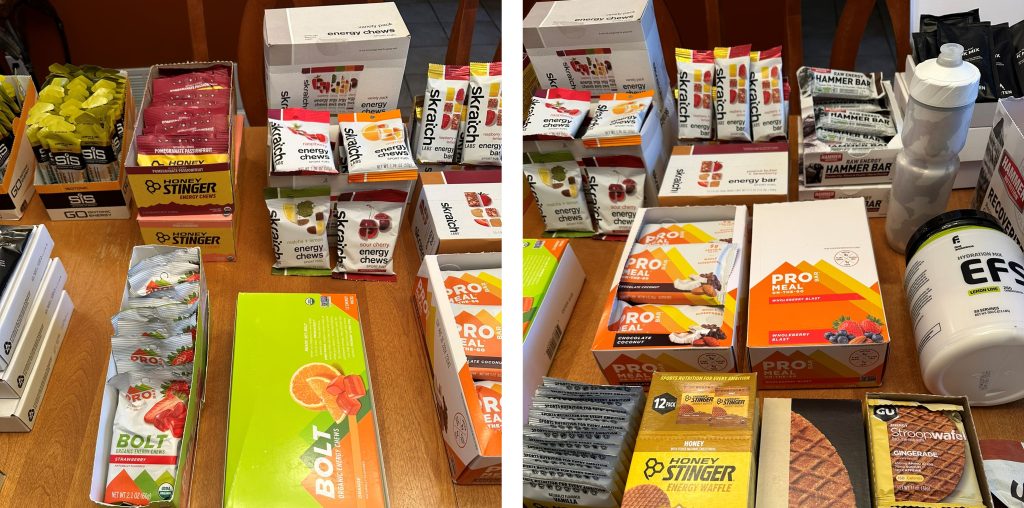
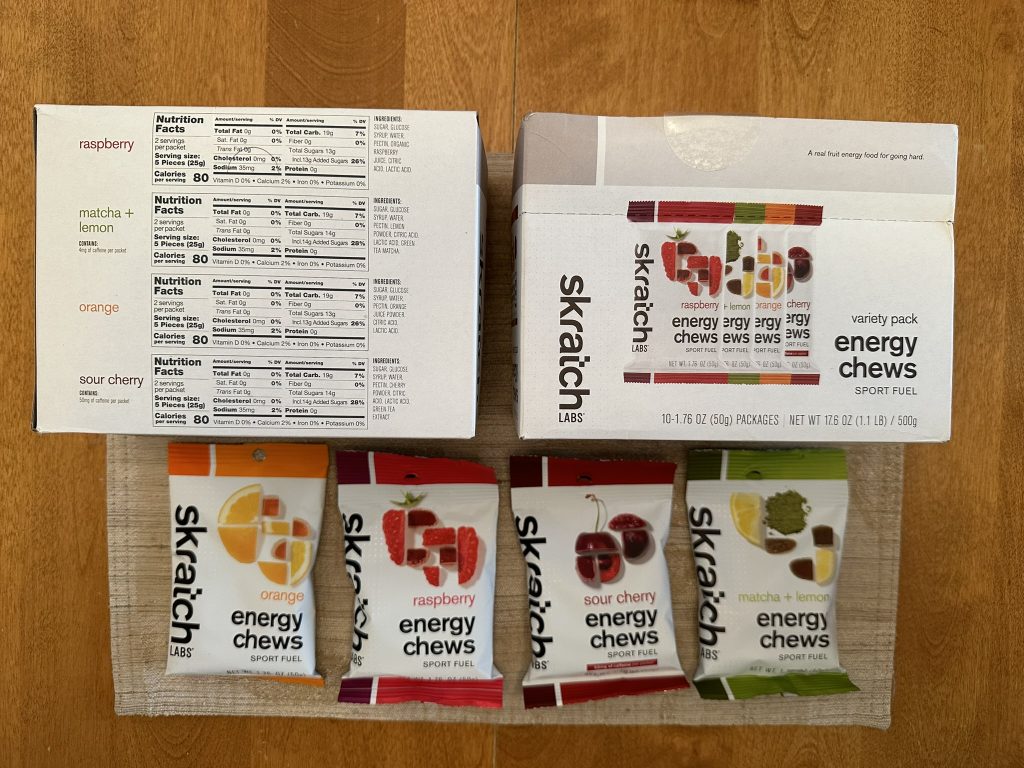
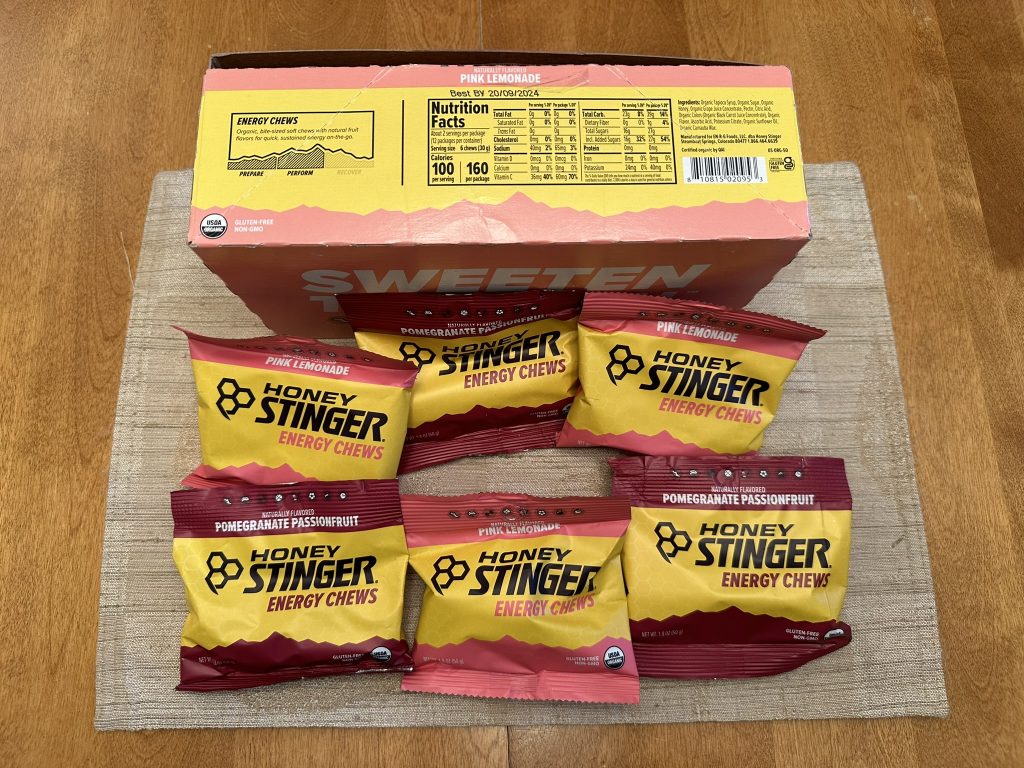
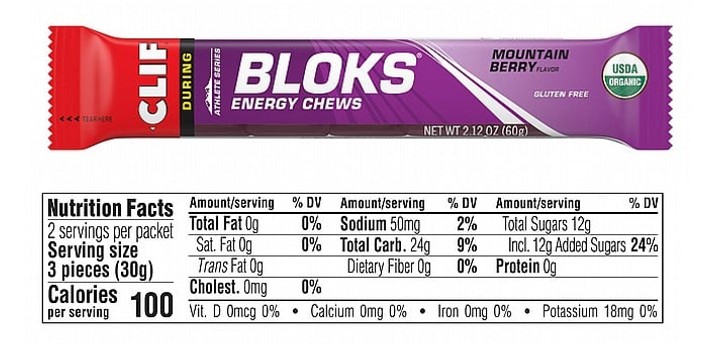
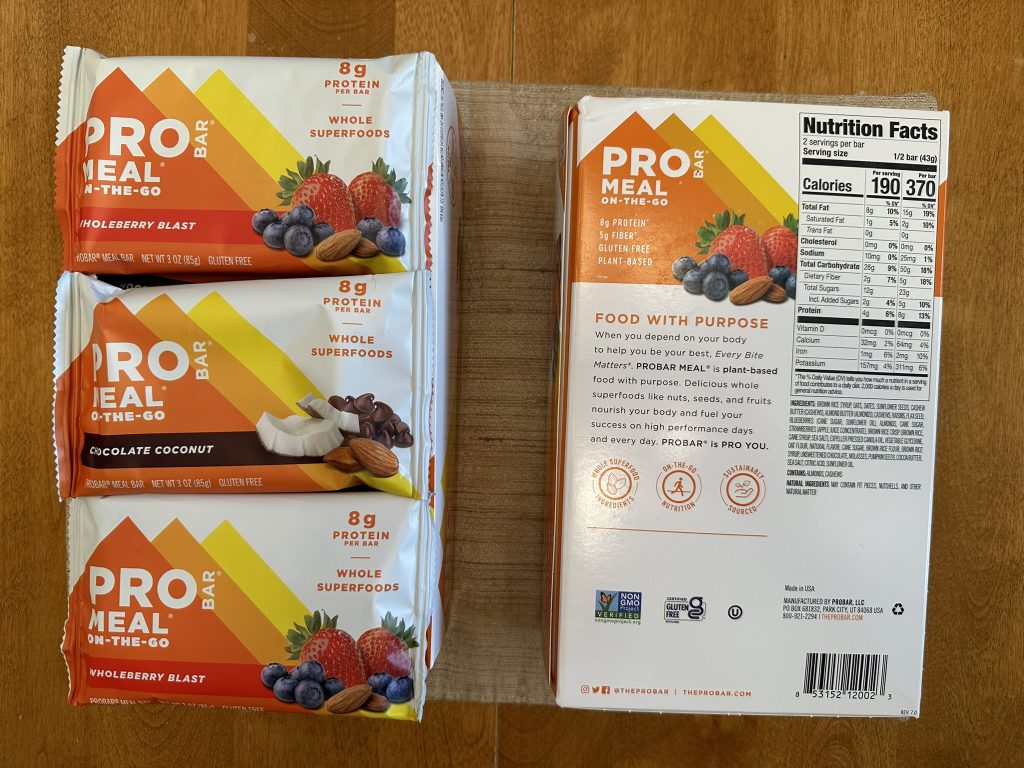
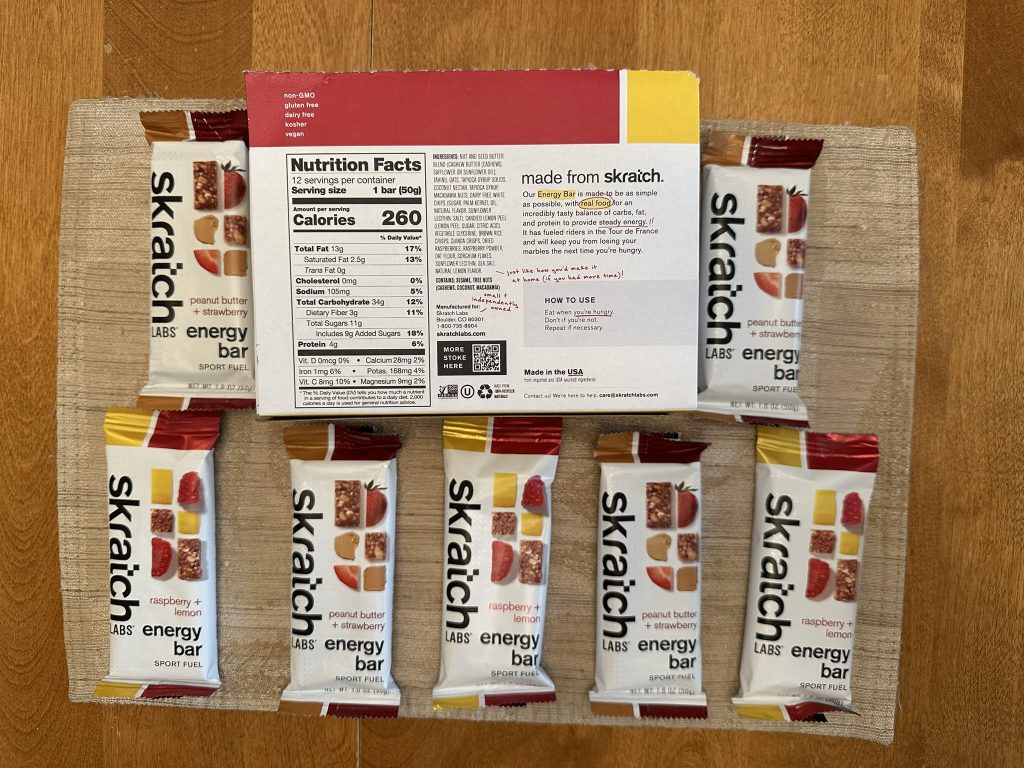
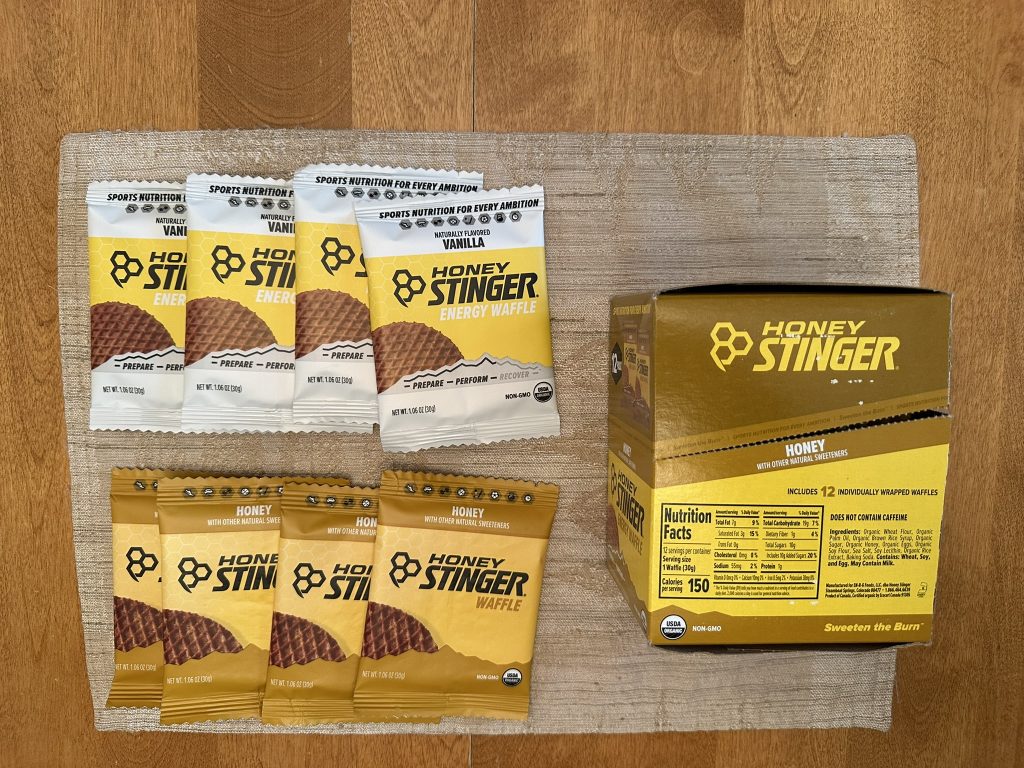
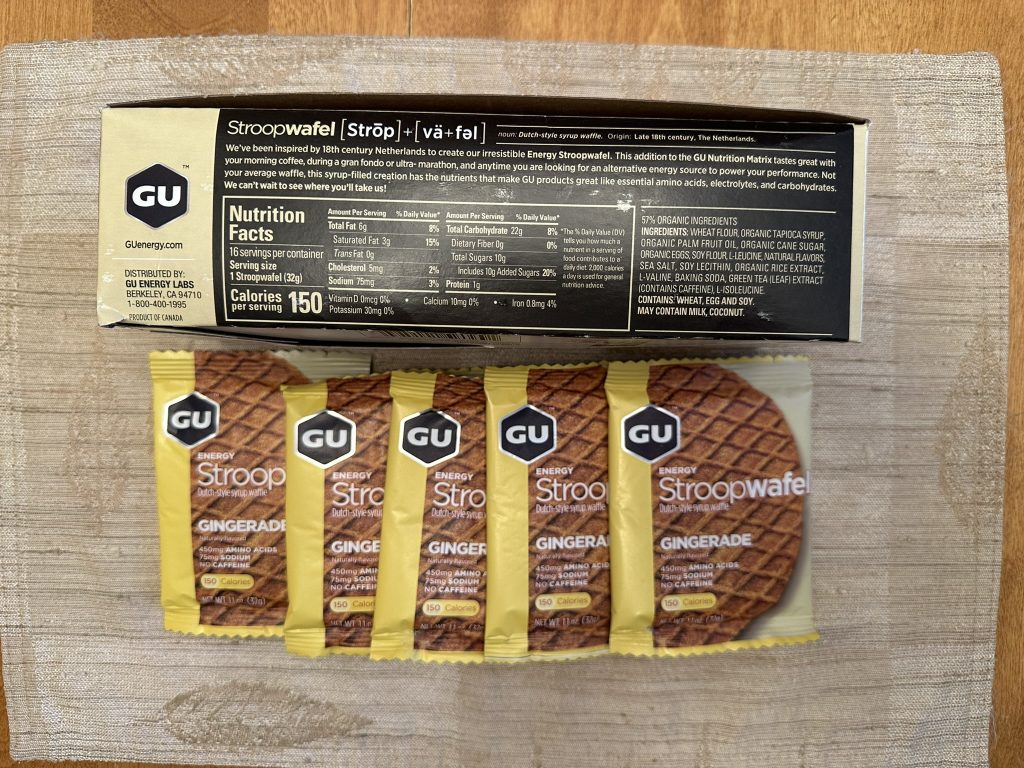
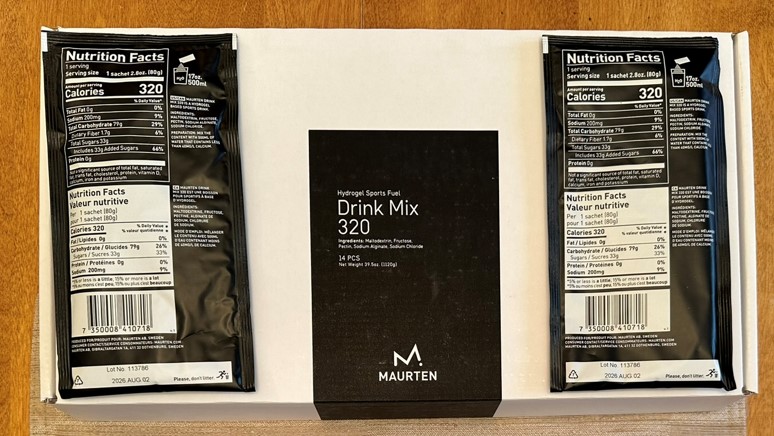
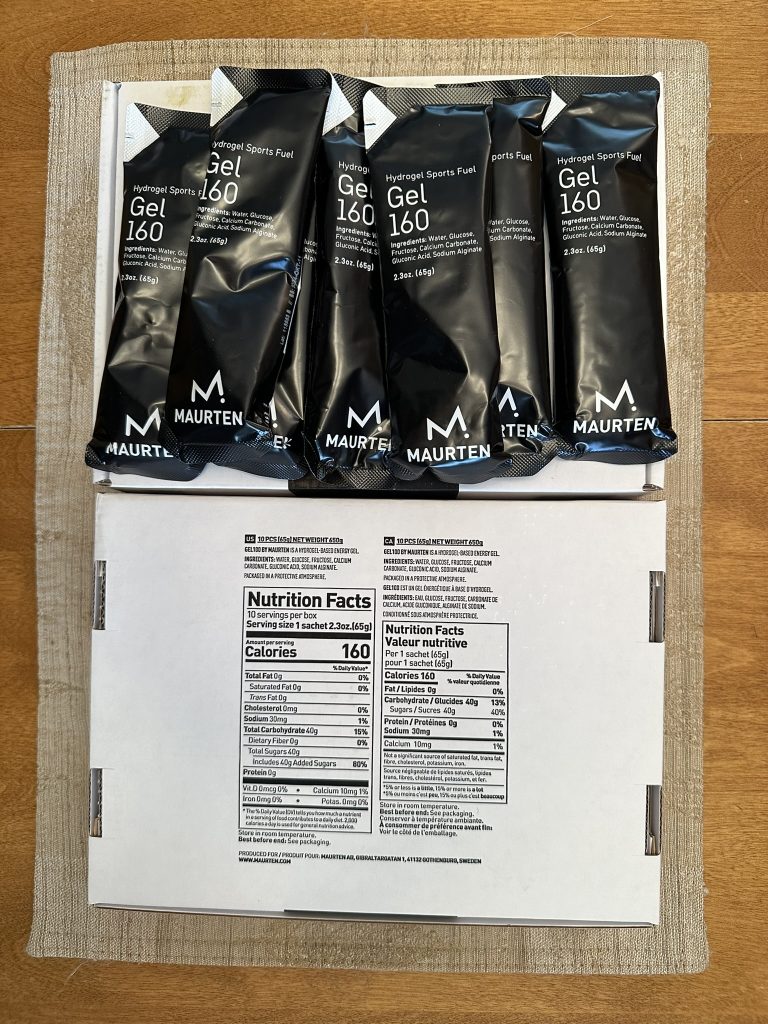
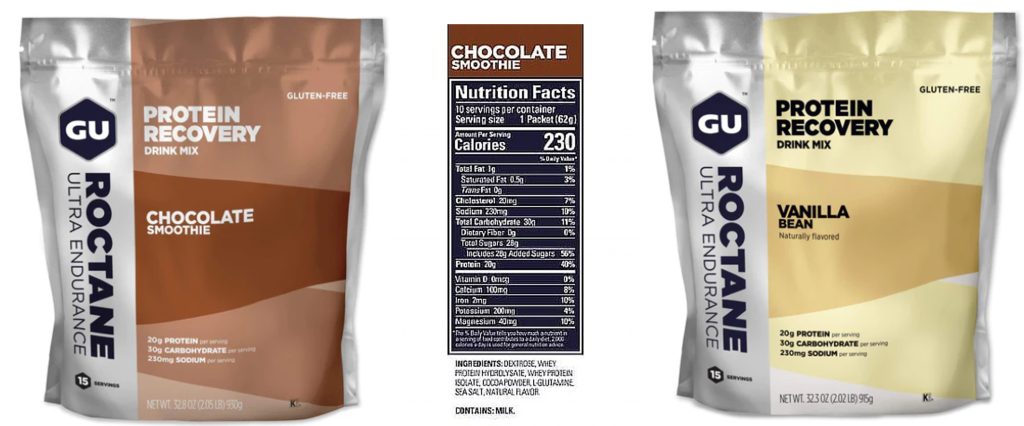
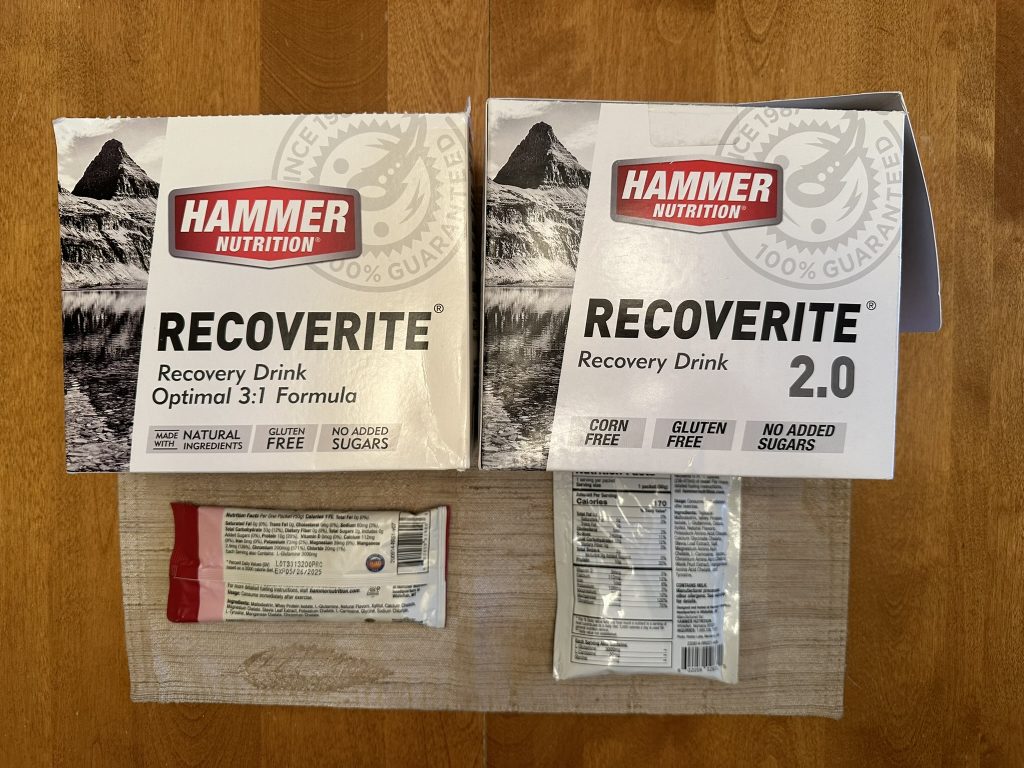
Have you reviewed Infinit Nutrition Go Far? I love it. Or Dr Berg’s Sports Hydration Electrolytes?
Pretty awesome combo I use.
I’m familiar with the Skratch Super High Carb mix. I am unable to tear gels with my teeth as the result of a cycling related broken jaw years ago. If it doesn’t mix in a bottle or isn’t solid enough to dig out of a bag, I have to stop riding to consume it. In shorter events this means I’m more concerned about the time it takes to fuel than I am about the time penalty for underfueling. The result is that I will try to put as much nutrition into a bottle as I can.
I use the Skratch Super High Carb for events and as a way of cramming those extra carbs. However, I don’t really like it. It makes the water more viscous. Not syrupy, but definitely thicker than water. It becomes a drink that makes me want to brush my teeth immediately. This isn’t a criticism of the product by the way. This is what you get when you try to dissolve as many carbs as possible into the smallest amount of water possible. Adding electrolyte powder to the mix helps balance the flavor profile but there just isn’t a way around the sugary viscosity aspect.
My go-to fuel products:
Skratch Hydration – every day in the bottle mix. It is light, not too sweet, has decent carbs, and tastes good.
Skratch Super High – in the bottle mix for those days I want as many carbs as possible
Gu Gels – w/ and w/o caffeine in a wide array of flavors to keep it interesting
SiS Gels – I bought a bunch of these. I don’t like the size of them and I find their flavors really uninteresting. I won’t buy more when I finally exhaust my supply. Good product. People I know like them. Just not for me.
Clif Bloks – w/ and w/o caffeine – I like these a lot. They taste good. They have a good consistency. They can be retrieved from a bag in a jersey pocket while riding. (I put a few packages of these in a plastic baggy for easy access and less trash that can escape!) I also like that they are portioned items so I can fuel in smaller increments more often. The high sodium margarita flavor are great.
Key Nutrients Electrolyte mix – This is the best bulk option I’ve found so far.
Osmo electrolyte – This is currently my favorite electrolyte packet for mid-ride refills.
Precision Energy 30g Chews – These are fantastic. Calorie dense chews with a neutral flavor that are pleasant to eat on the bike.
I try to keep one bottle just water so I can rinse some of the sugar off my teeth. Fueling is important, but taking care of my teeth is more important.
One comment I always have with gels (and in general any ride food) is convenience to eat safely while riding. A gel flask filled with gel bought in bulk is an easy solution. Shoutout to Hammer gel for their bulk options and gel flask.
CliffBlocks are also easy to eat one-handed almost like go-gurt. Other foods, I personally have to slow down and find a calm opportunity to eat. If ride food could also be packaged more like go-gurt, would be interesting.
I think it’s brave to tackle the topic of bike nutrition and this article turned out extremely well. Thank you!
Hi Steve…any scientific proof of the claims by Maurten for its sodium bicarb mix kit?
Jay, haven’t researched this one thoroughly. Maurten funded studies support the product (surprise, surprise) but not aware of independent ones. Steve
Good piece Steve. I use Hammer products and would have been interested in your comments about Hammer Gel, Heed, and Perpetuem.
Anything you can share? Thanks
Hi Mal, Nothing much I can add. We did test a few Hammer products but not all. What’s your take on the three you mentioned? Steve